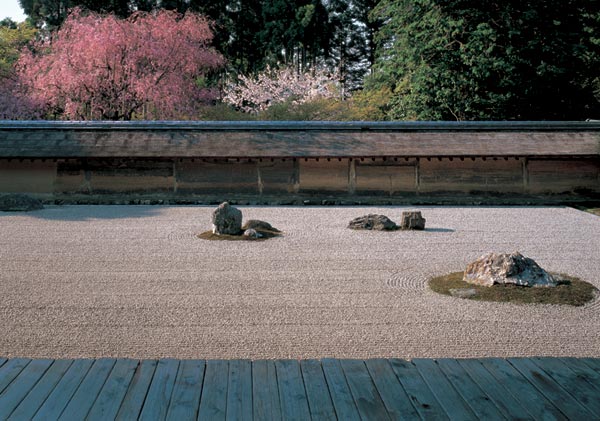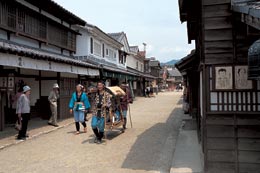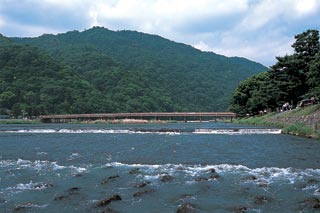| Web Japan > NIPPONIA No.30 > Special Feature* |
|
|
|
NIPPONIA No.30 September 15, 2004
|
|
Special Feature*
Kyoto, a Feast for the Eyes
The northern and western parts of Kyoto offer excellent opportunities to enjoy natural surroundings and Japan's cultural heritage.
This area of the city is known especially for the Temple of the Golden Pavilion and the beautiful Sagano and Arashiyama districts. Here you will enjoy the charms of nature, whatever the season, and experience firsthand the history of Kyoto.
Written by Sakagami Yasuko, Photos by Mizuno Katsuhiko,
Omori Hiroyuki and Takeda Norihisa |
Ryoan-ji Temple
Originally built as a second home for an aristocratic family. A military commander transformed the estate into a Zen temple in 1450. The famous rock garden is in the kare-sansui (dry landscape) style, and has just 15 rocks positioned among raked white stones in a rectangular plot measuring about 25 meters east-west, 10 meters north-south. The garden is known worldwide as an expression of the spirit of Zen. Many Japanese people find Zen concepts difficult to comprehend, but almost everyone comes away from the temple touched by the purity and mysterious vibrancy emanating from the garden.
 |
||||
|
Kyoto Studio Park
 This new tourist attraction combines the Kyoto studio of Toei Co., Ltd., with a theme park for movie fans. Some of the film sets that are open to the public have full-scale replicas of city streets in the Edo period (1603-1867) and samurai houses. You might see a crew filming a feature movie or a period drama for TV. Another attraction is a 3D adventure in old Japan. At the Shashin-kan, you can dress up as a samurai warrior or ninja spy and have your picture taken. The theme park also goes by the nickname, "Japan Hollywood."
|
||||
|
Arashiyama District
 The district encompasses both banks of the Katsura River and Mount Arashi (elevation, almost 380 m), extending into parts of Ukyo and Nishigyo wards in western Kyoto. Since ancient times, Arashiyama has been celebrated in waka poetry for its beautiful scenery. The cherry blossoms in spring and the autumn foliage attract many tourists. Two ways to see the sights are to take an open train or ride in a rickshaw. Souvenir shops and eating and drinking establishments line the streets leading to Togetsu Bridge, which crosses the Katsura River.
|
||
|
|
||||||||
|